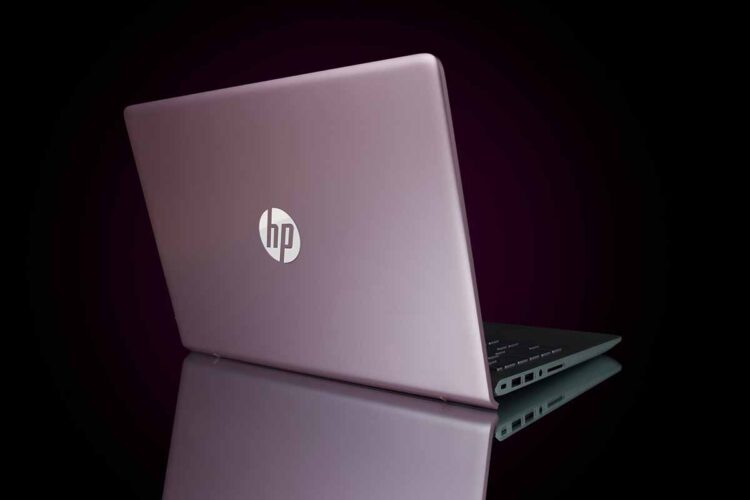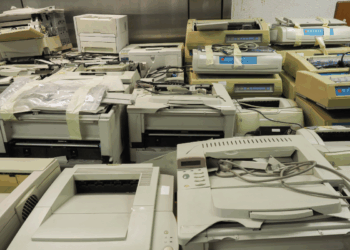HP used three companies to refurbish and reuse its devices in 2021 and about 40 recyclers, according to its annual report.
The technology manufacturing giant also made progress towards its goal of a circular economy, the 2021 HP Sustainable Impact Report said.
Vendors and audits
Reuse vendors include Hewlett-Packard Financial Services Company, Nippon General Trading and TES-AMM Central Europe, TES-AMM España Asset Recovery and Recycling, TES-AMM France, TES-AMM New Jersey and TES-AMM UK.
Recycling facilities span the globe and include Canon Bretagne, Close the Loop Operations, Coolrec Nederland, Dynamic Lifecycle Innovations, ERI, ERP, E-scrap Orinoco, EWASTE+, Greenchip, Quantum Lifecycle Partners, Remondis, RLG Reverse Logistics India, Sims Lifecycle Services, Sunnking, Terra and TES-AMM, among others.
Many recycling facilities utilized by HP are in the United States and United Kingdom, with others in India, France, Germany, Mexico, Argentina, Poland, Hungary and China, and more countries.
HP conducts regular audits of all its production suppliers, product reuse and recycling vendors and nonproduction suppliers. In 2021, it performed 189 total audits, 25 of which were reuse and recycling vendors. Those 25 were located in 14 countries, the report said.
The company said it prefers its vendors to have third-party certification, such as R2, e-Stewards or WEEELABEX, and uses Environmental Resources Management (ERM) to audit vendors at least every three years for environmental, health and safety practices and performance, and to ensure there is no leakage of materials to facilities outside of HP’s approved vendor network.
Any vendors that are found to be out of compliance must submit corrective action plans within 30 days and solve the issues in 90 days, the report said, adding that “in extreme cases, we will cease business with vendors that lack sufficient transparency or are unwilling to make the changes we require.”
Audits in 2021 included repeat audits of 15 vendor facilities to evaluate their efforts to improve performance, and the report said the company was able to close all investigations of major non-conformances identified in 2021. Only three were classed as “immediate priority findings,” the most serious type, and they occurred at two recycling vendor sites.
“In all cases, we worked closely with the vendor to resolve and close the findings,” the report said, and all sites with major non-conformances will be re-audited in 2022 “to determine whether improvements are sustained.”
The report noted that because 28% of major non-conformances occurred at sites that were being audited for the first time, “HP’s engagement brought best practices, enabling immediate performance improvements.”
The largest category of major non-conformances in 2021 was health and safety at 29%, the report said, tied with the “other” category (29%). The rest were due to environment (13%), subvendor use and audits (13%), hazardous substance/emergency response (12%) and insurance (4%).
While most of those percentages held steady compared to 2020, health and safety showed a decrease from 43% in 2020 to 29% in 2021, while subvendor use jumped from 7% in 2020 to 13% in 2021 and hazardous substance/emergency response also increased from 5% in 2020 to 12% in 2021.
The number of initial audits the company performed, 10, was the same as in 2020. In 2019, only four of the audits performed were initial, as opposed to follow-up audits.
Circular economy goal progress
HP reported in 2021, it reduced single-use plastic packaging by 44% compared to 2018, increased its use of post-consumer plastic to 13%, or 32,000 tons, and hit 39% circularity by weight. The company uses a circularity metric based on the total annual product and packaging content, by weight, that comes from recycled and renewable materials and reused products and parts.
The company’s goal is to hit 75% circularity for products and packaging by 2030. Other goals include using 30% post-consumer plastic by 2025 and eliminating 75% of single-use plastic packaging by 2025.
“By shifting toward circular design principles, we are working to increase value for customers while reducing environmental impacts across the value chain,” the report said, adding that “we will continue to innovate throughout our product and services portfolio and work with suppliers and channel partners to increase circularity.”
Recycled metal is a growing focus for HP, the report said, and in 2021 it used 4,300 tons in its products, which is about 0.4% of its total metal use. The company also used 7,200 tons of reused products and parts, which is about 0.8% of the total materials used. The report anticipates more products transitioning away from plastic and into metal.
“We work with suppliers to source metals with a high proportion of recycled content for some personal systems products, including up to 75% recycled content aluminum and up to 90% recycled content magnesium,” the report said.
HP is also looking to start using recycled steel, the report said. The company’s goal is to recycle 1.2 million tons of hardware and supplies by 2025, and as of 2021, it has recycled 764,800 tons.
“We design our products to last, and make them easy to repair, so they can stay in use for as long as possible,” the report said, also noting HP’s take-back programs in 77 countries and territories.

























